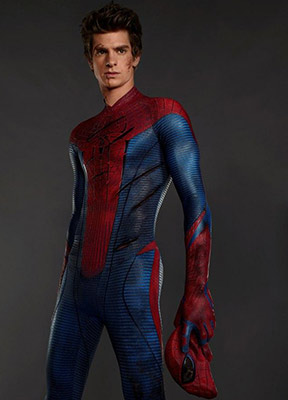HOLLYWOOD NOT DOING ENOUGH WHEN IT COMES TO GAYS

Will we ever see an LGBT superhero on the big screen?
American LGBT media group GLAAD has slammed Hollywood’s big studios for including so few LGBT characters in the films they released last year.
This according to the organisation’s first Studio Responsibility Index (SRI), a report that “maps the quantity, quality and diversity of images of LGBT people in films released by the six major motion picture studios during the 2012 calendar year”.
GLAAD found that of the 101 releases from the major studios in 2012, 14 of them included characters identified as lesbian, gay, or bisexual.
The organisation added that most of these characters were no more than cameos or minor roles and they were overwhelmingly white and male. None of the films tracked contained transgender characters.
It said that big budget films like comic-book adaptations and action franchises are where major studios seem to commit the majority of their money, but they remain very reluctant to include LGBT characters in them.
“LGBT characters need to not only appear with greater regularity in a range of film genres, but also in more substantial roles. The question of whether a major studio would ever depict a protagonist of an action franchise as anything other than straight remains,” said GLAAD.
As part of the inaugural SRI, GLAAD also introduced the “Vito Russo Test,” a set of criteria analysing how LGBT characters are represented in a fictional work.
Named after GLAAD co-founder and celebrated film historian Vito Russo, and partly inspired by the “Bechdel Test,” these criteria represent a standard GLAAD would like to see a greater number of mainstream Hollywood films reach in the future.
The Vito Russo Test includes the following criteria:
• The film contains a character that is identifiably lesbian, gay, bisexual, and/or transgender (LGBT).
• The characters must not be solely or predominantly defined by their sexual orientation or gender identity (i.e. the character is made up of the same sort of unique character traits commonly used to differentiate straight characters from one another).
• The LGBT character must be tied into the plot in such a way that their removal would have a significant effect. Meaning they are not there to simply provide colourful commentary, paint urban authenticity, or (perhaps most commonly) set up a punchline; the character should matter.
According to GLAAD, less than half (six) of the 14 major studio films that featured an LGB character managed to pass the Vito Russo Test.
“As a major influence in American culture and one of our nation’s largest media exports abroad, the lack of LGBT characters in big-budget films needs to change,” said GLAAD’s Wilson Cruz.
“Until LGBT characters are depicted in these films in a substantial way with more regularity, there will remain the appearance of LGBT bias on the studios’ part. Whether it’s an action hero or a supporting character, moviegoers should be able to see LGBT people as integral players in the stories told by leading Hollywood studios.”
Cruz noted that, “Entertainment media consumers are seeing diversity depicted on the small screen and LGBT-inclusive TV shows have consistently been among the most popular shows with audiences and critics,” adding that “by being more inclusive, the Big Six studios can attract an audience that expects to see a diverse cast of characters.”
Leave a Reply